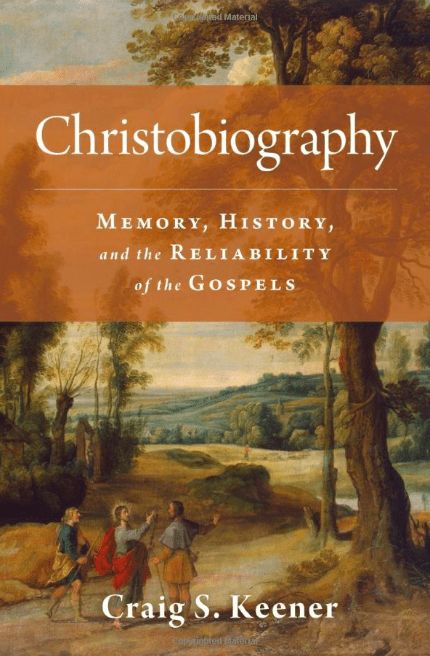 If the Gospels, our four Gospels in the NT canon, are biographies in genre what does that mean for history? Craig Keener in what will become a major milestone Christobiography: Memory, History, and the Reliability of the Gospels (#ad), addresses this question with circumspect analysis and cautious conclusions.
If the Gospels, our four Gospels in the NT canon, are biographies in genre what does that mean for history? Craig Keener in what will become a major milestone Christobiography: Memory, History, and the Reliability of the Gospels (#ad), addresses this question with circumspect analysis and cautious conclusions.
I have now worked through this 500 pager and think his conclusions are worth posting here as I encourage every theological library to purchase a copy of this book:
Traditional skeptical and fundamentalist approaches to the Gospels have generally committed the same error: judging the Gospels by standards foreign to their original genre.
Keener’s argument is rooted in the conclusion that the Gospels are to be set in the “biography” genre and I agree, in the main, with that, though the Gospels themselves begin with them as “gospels” (telling the redemptive story of Jesus). Keener finesses the meaning of biography precisely in that direction but his interest — as always — is whether the Gospels are historically reliable. His conclusions:
- They are full biographies of a publicly known figure, rather than brief lives of poets.
- They are from the most information-based period in the development of ancient biography, namely, the period of the early empire. Biographies in this period are generally developed beyond less historically minded earlier encomia, yet they also predate later hagiography. Comparing different biographies from this period about the same figure illustrates these biographies’ anchoring in information.
- The Gospels were composed within living memory of their subject, making substantive accurate information likely.
- The most respected leaders in the traditioning community were eyewitnesses.
- Not only were the most respected leaders in the traditioning community eyewitnesses; they were also disciples, who of all people would work hardest from the start to preserve their mentor’s legacy and teaching.
- Something not explored in this volume, but easily confirmed by perusing a synopsis of the Gospels, is the significant overlap of material in the Synoptics. This overlap confirms that these works are information-based rather than novelistic and that their authors regarded their own sources as sufficiently trustworthy for information-based composition.
- Information-based first-century Gospels that used sources cannot have been significantly (more than a few decades) later than those sources that they used, and they likely had good reason to assess the reliability of their sources the way that they did.
- Logic suggests a further conclusion. More sources circulated in their day (Luke 1:1) than remain, and the Gospel authors could not know what information would remain extant in subsequent eras. Therefore, we should expect them to adapt their sources where we cannot test them in ways comparable to where we can. When Matthew and Luke (on the standard view) follow Mark so closely, sometimes nearly word for word, it seems incredible to suppose that they often simply invent entire stories from whole cloth wherever we cannot test them, any more than we would expect such invention from other ancient writers who follow their sources where we can test them. In short: it is not fair to simply say, “For such-and-such a point, we have no evidence outside the Gospels, and therefore we lack evidence” The Gospel narratives are themselves evidence.
Other summary points:
In any case, I believe that my two most essential primary points are difficult to dispute: in the early empire, normal biographers writing full works about recent figures attempted to recount or reconstruct what they believed to be historical information (or perhaps in some cases, traditions that were at least possibly historical), normally for edifying purposes; and biographers could exercise a degree of flexibility in how they recounted that information.
More precisely, audiences from the Gospels’ era did not expect biographers to freely invent events, but they did allow them to flesh out scenes and discourse for the purpose of what they considered narrative verisimilitude. Biographers were not supposed to invent a teacher’s message, but they could interpret and communicate it from their own perspectives. I











